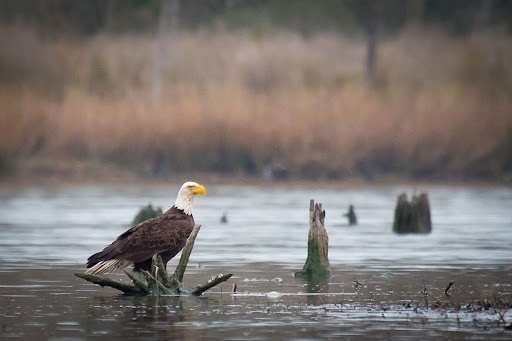Projects include the possible expansion of the Armand Bayou Nature Center and other ecological projects related to parks in League City. The preservation of native Bay Area ecosystems are also among such projects.
These areas, such as the coastal prairie and coastal wetland, offer flood mitigation and erosion control in addition to acting as recreation spaces, according to the U.S. Environmental Protection Agency and the University of Houston Coastal Center.
“The reason that these forests and these prairies are so important to all of us are the ecosystem services that they provide,” said Tim Pylate, executive director of the Armand Bayou Nature Center. “A single acre of prairie can hold a million gallons of water.”
Native Bay Area ecosystems also provide economic value by bolstering local fish populations, providing habitat for oysters and generating ecotourism, according to a report by the EPA.
The coastal center estimates less than 1% of the 6.5 million acres of coastal prairie estimated to originally have been on the Texas Gulf Coast remains. Officials said these native ecosystems face risk of disappearing due to environmental stressors.
Nurturing nature
Major stressors affecting native ecosystems include land development, severe storms and invasive species, according to the EPA report. However, there are tools and strategies being implemented that can be further developed to combat these stressors.
Land development can impact native ecosystems as development can damage, fragment or remove them entirely. Conservation incentive programs, such as tax credits, offer developers more reasons to better plan the use of their land and conserve when possible.
Severe storms—such as Hurricane Ike, which is estimated to have covered 60% of Galveston Bay’s oyster reef habitat in September 2008—can damage ecosystems through erosion and sediment deposition, according to the report. Mitigation efforts include “living shorelines,” which mix stone and vegetation, in place of typical infrastructure like armored shorelines, which use seawalls and bulkheads that can eliminate habitat space for local species.
Furthermore, invasive plant and animal species can quickly eliminate native species until the invasive species are all that remain. Conservationists like Pylate recommend local residents be careful about what they plant.
The Bay Area already has some tools in place, such as the Houston-Galveston Area Council’s “Eco-logical Mapping Tool” that has data on ecosystem types, land use and planned developments. Additionally, education efforts also continue via local green spaces, organizations and government agencies.
“We are trying to raise awareness of conservation issues among the public, while also trying to build a large list of volunteers,” League City Parks Coordinator John Orsag said.
Largest local preserve
The Armand Bayou Nature Center, which is located between the Bayport Industrial Area and Johnson Space Center, has raised nearly $17 million over the last five years for the purchase of a former oil field north of its property. In late March, the nature center made a purchase offer to Exxon Mobil Corporation in competition with developers, Pylate said.
If the sale is approved, the nature center would add 1,000 acres of the field to its multiecosystem 2,500-acre urban wilderness preserve. The center is also trying to obtain an additional 175 acres of land to preserve from the Port of Houston, Pylate said.
“Armand Bayou Nature Center is one of the largest urban wilderness preserves in the United States,” Pylate said. “Our mission here is twofold: first of all, to preserve the habitats with which we’ve been entrusted, and secondly, to educate the public about why these habitats are so important for all of us.”
The nature center contains three ecosystems: riparian forest, coastal wetland as bayou and about 900 acres of coastal prairie. Riparian forests are woodlands adjacent to bodies of water like bayous and offer many ecological benefits such as filtration, flood mitigation and stabilization of eroding banks, according to the U.S. Department of Agriculture.
“[Native ecosystems] act as a giant filtration system for [the Bay Area],” Pylate said.
The nature center also offers educational opportunities for the local community on native ecosystems via guided tours and programs for children. Plus, the center keeps animals, such as the bobwhite quail and American bison, as animal ambassadors to showcase animals that live or historically lived in local habitats.
“Over the last four years, we’ve almost entirely lost our bobwhite quail population,” Pylate said. “These are actually ghosts of our past; they’re no longer here.”
Other projects worth more than $50 million proceed across the Bay Area. League City’s Parks and Recreation Department has many in progress, such as the $115,000 Clear Creek Master Plan; the upcoming Bay Colony Park; and an update to the Parks, Trails and Open Space Master Plan.





